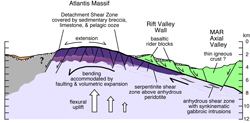 | ||
Oceanic core complexes mike cheadle
An oceanic core complex (OCC), or megamullion, is a seabed geologic feature that forms a long ridge perpendicular to a mid-ocean ridge. It contains smooth domes that are lined with transverse ridges like a corrugated roof. They can vary in size from 10 to 150 km in length, 5 to 15 km in width, and 500 to 1500 m in height.
Contents
- Oceanic core complexes mike cheadle
- History distribution and exploration
- Formation
- Examples
- Research
- References
History, distribution and exploration
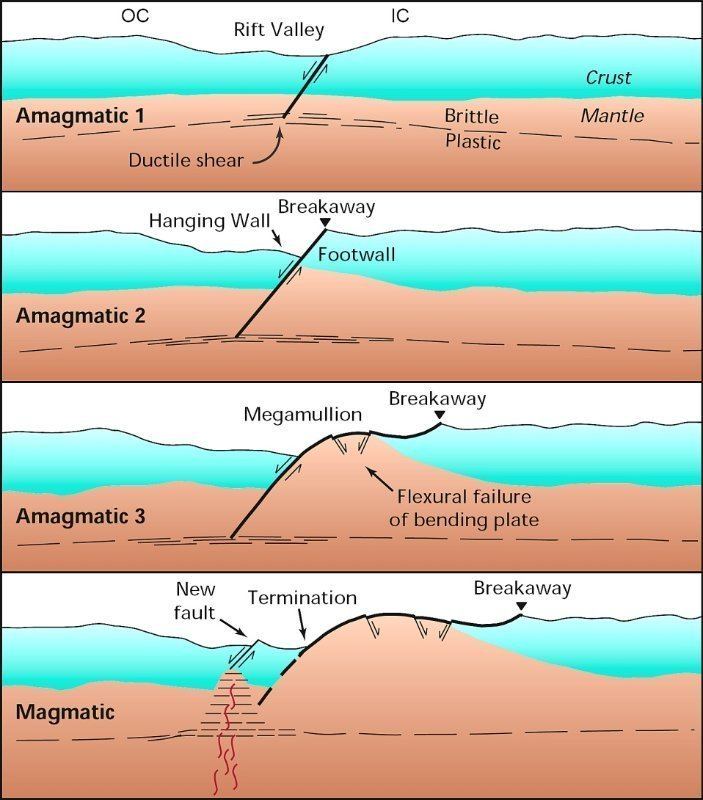
The first oceanic core complexes described were identified in the Atlantic Ocean. Since then numerous such structures have been identified primarily in oceanic lithosphere formed at intermediate, slow- and ultra-slow spreading mid-ocean ridges, as well as back-arc basins. Examples include 10-1000 square km expanses of ocean floor and therefore of the oceanic lithosphere, particularly along the Mid-Atlantic Ridge and the Southwest Indian Ridge. Some of these structures have been drilled and sampled, showing that the footwall can be composed of both mafic plutonic and ultramafic rocks (gabbro and peridotite primarily, in addition to diabase), and a thin shear zone that includes hydrous phyllosilicates. Oceanic core complexes are often associated with active hydrothermal fields.
Formation

Oceanic core complex structures form at slow spreading oceanic plate boundaries which have a limited supply of upwelling magma. These zones have low upper mantle temperatures and long transform faults develop. Rift valleys do not develop along the expansion axes of slow spreading boundaries. Expansion takes place along low-angle detachment faults. The core complex builds on the uplifted side of the fault where most of the gabbroic (or crustal) material is stripped away to expose mantle peridotite. They comprise peridotites ultramafic rocks of mantle and to a lesser extent gabbroic rocks from the Earth's crust.
Each detachment fault has three notable features: a breakaway zone where the fault began, an exposed fault surface that rides over the dome and a termination, which is usually marked by a valley and adjacent ridge.
Examples
Some 50 oceanic core complexes have been identified, including:

Research

Scientific interest in core complexes has dramatically increased following an expedition in 1996 which mapped the Atlantis Massif. This expedition was the first to associate the complex structures with detachment faults. Research includes:
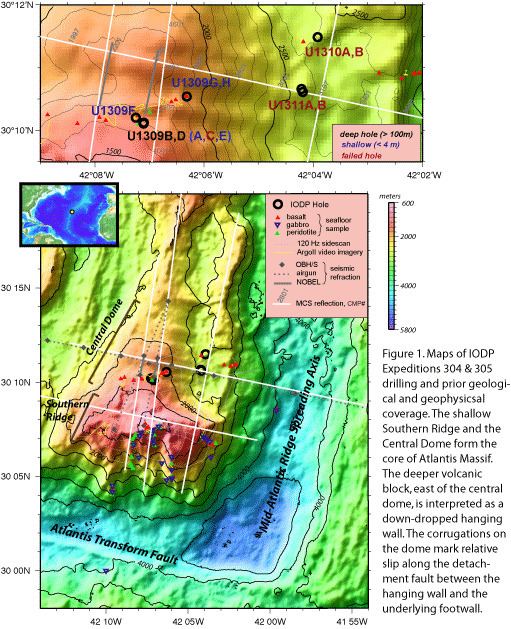
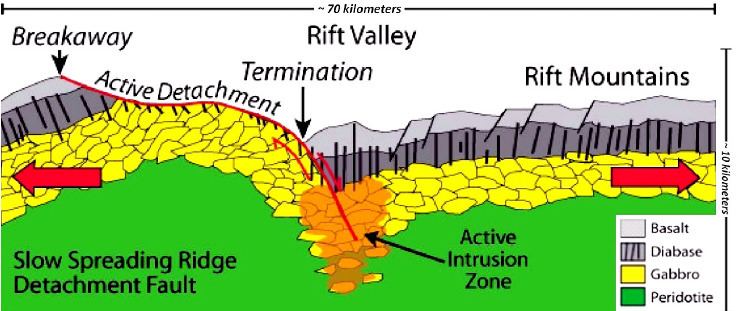
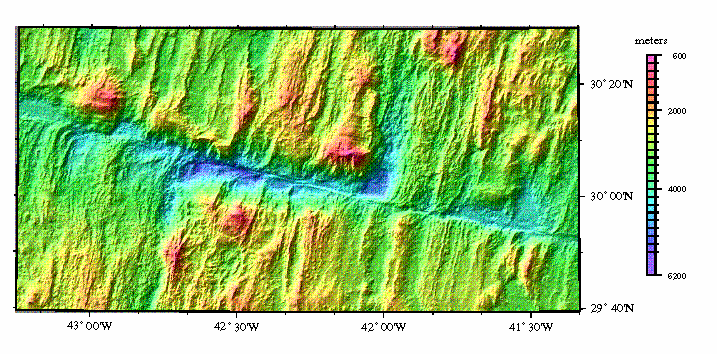
The conventional view that marine magnetic anomalies arose in the upper, extrusive layer of the oceanic crust requires a rethink because perfectly normal magnetic anomalies arise at core complexes, where the crust has been stripped away. This suggests that the lower part of the ocean crust contains a substantial magnetic signature.

